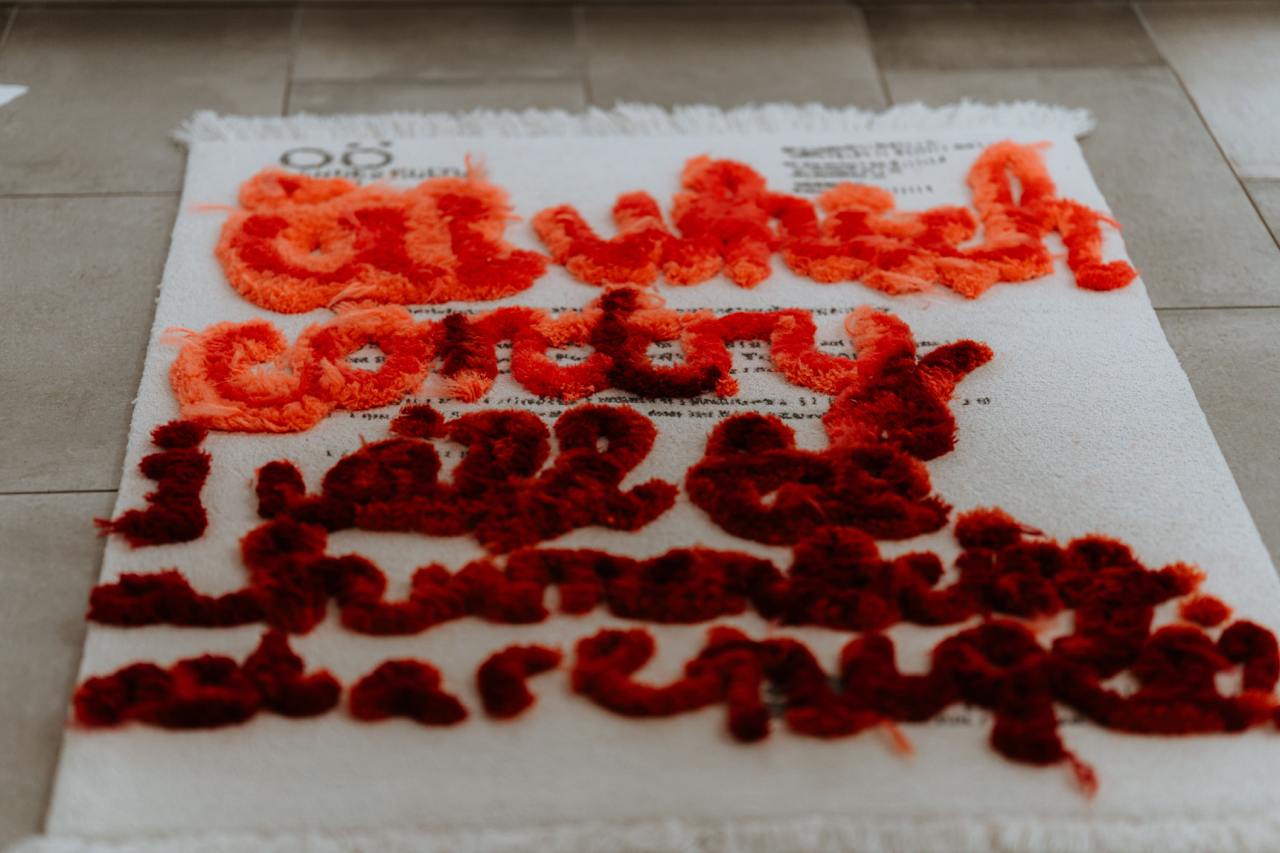February, 2025
Kyiv, Ukraine
February, 2025
Kyiv, Ukraine
Carpet #1, 150 x 105 cm, 2025

The carpet is the result of Maria Kulikovska’s experiment with materiality and medium, expanding her series Watercolors on Paper Received from Migration Services into a new three-dimensional format. Its size is 150 × 105 cm, and its execution technique involves an embroidered volumetric texture that mimics the blurriness of watercolor lines while contrasting with the documentary precision of the official bureaucratic text that remains visible beneath the layers of thread.
The phrase in the work’s title—“In which country will I be a human being?”—becomes both a question and a statement, a painful reflection by the artist, who has lived in forced migration since 2014. As in her watercolor series, documents obtained from migration services are used here as material evidence of a person’s existence within the administrative field. Kulikovska interprets the bureaucratic document as a sheet on which she can assert her right to exist through art, while the system itself demands proof of this existence again and again.
"The human body becomes political, even without its own consent," says Kulikovska. In this context, the translation of artistic expression into the form of textiles can be read as a metaphor for corporeality and its political status. A carpet is an object associated with everyday life, protection, and warmth, yet it is also a surface that people walk on. Could this be an allusion to the treatment of forced migrants and their documents—those who are compelled to integrate into a new context, often facing indifference or hostility?
Kulikovska creates a volumetric watercolor where textiles serve as a carrier of the same "blurred," intuitive, and conflicted painting as on paper. The work “In which country will I be a human being?” is a painting that becomes a body, fabric, and physical object. It compels the viewer not just to observe but to feel—to touch with their eyes, sense the texture of space, and grasp the tension between the document and its deconstruction through the artistic gesture.
Thiece is part of a larger manifesto about corporeality, borders, and bureaucratic reality. Its question—“In which country will I be a human being?”—remains open and continues to resonate as long as borders define people’s lives and force them to prove their right to exist.
Sviatoslav Mykhailov